- Date
- Friday, March 12, 2021
Most avalanche fatalities happen when the danger rating is considerable. Here are 10 tips on managing avalanche hazard when the danger is considerable.
An avalanche danger rating of considerable is regarded by many experts as the trickiest to manage. The avalanche danger isn’t as obvious as when the rating is high, but it’s still not a good idea to take chances in avalanche terrain. Here are 10 things you should know about considerable danger:
1. Human triggered avalanches are likely
Just because it’s in the middle of the scale, doesn’t mean the danger is middling. In fact, human-triggered avalanches are likely and the majority of avalanche fatalities in Canada happen when the avalanche danger is rated considerable.
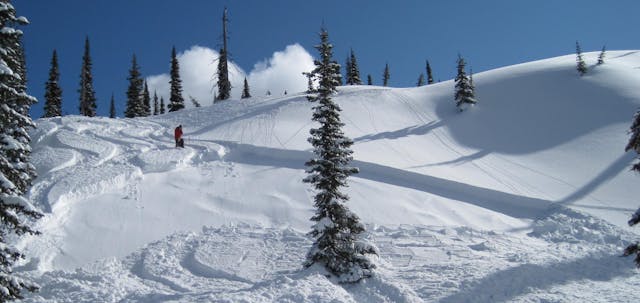
A skier triggers a small storm slab avalanche. When the avalanche danger is considerable, human-triggered avalanches are likely. Photo: University of Calgary's Applied Snow and Avalanche Research Centre
2. It's frequently used in forecasts
For this winter and the last one, considerable danger has been the second most forecast danger rating, after moderate. You should understand what it means, because you’ll see it a lot.
3. The danger isn't always obvious
The danger isn’t always obvious when it’s considerable. When the danger is high, you’re likely to be seeing lots of natural avalanches, which is a sure sign to get out of Dodge. When the danger is considerable, natural activity has tapered off, but human-triggered avalanches remain likely.
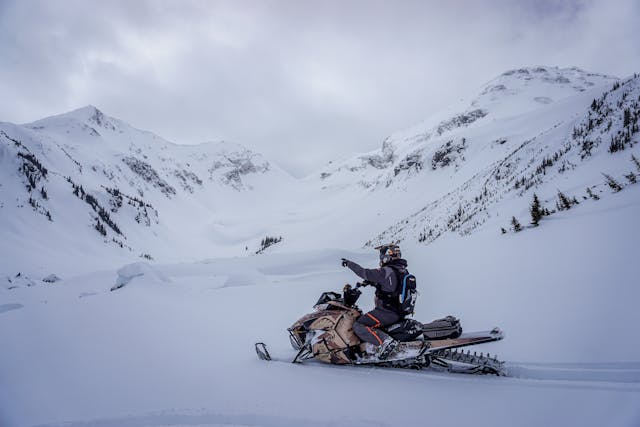
There are no obvious signs of danger like recent natural avalanches, but when the rating is considerable, significant danger still exists. Photo: Nicole Matei.
4. Advanced travel skills are needed
Would you cross the road if it were likely you’d be hit by a car? Probably not. You might make it safely across, but it would take some serious Frogger-like skills to do so safely. Likewise, it takes advanced skills to navigate avalanche terrain when the danger is considerable.

Just like crossing the road in the classic arcade game Frogger, it takes advanced skills to travel through avalanche terrain when the danger is considerable.
5. Check the Avaluator
For a better idea of that, take a look at the Avaluator Trip Planner card. When the danger is considerable, only simple terrain is considered safe to enter with regular caution. Challenging terrain, which has exposure to well defined avalanche paths, start zones, or terrain traps, requires extra caution to navigate safely. Travel in complex terrain, which involves near-constant exposure to avalanche hazard, is not recommended by experts and requires very advanced route-finding skills.

When the danger is considerable, challenging terrain requires extra caution and complex terrain is not recommended. Only simple terrain is safe with regular caution.
6. Lots of possibilities
Another reason considerable danger is hard to manage is because it encompasses the whole spectrum of avalanche possibilities: small avalanches, large avalanches, and very large avalanches are all considered likely to be human triggered.
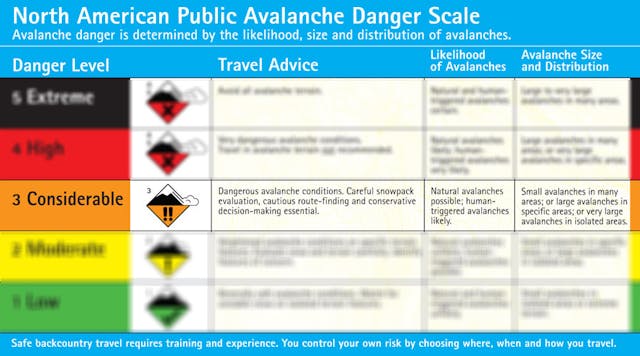
The definition of considerable in the North American Public Avalanche Danger Scale contains several scenarios, all of which can apply at once.
7. Small avalanches in many areas
A small avalanche may not involve enough snow to bury you, but it can still be dangerous if it sweeps you over a cliff or into a gully. Under considerable danger, these types of avalanches are likely in many areas and you’ll need to keep your head up so one doesn’t catch you or your group in the wrong spot.
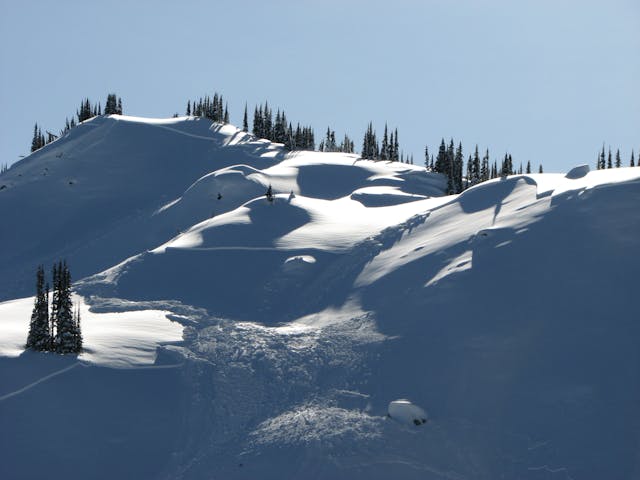
Widespread small avalanches is one possibility when the danger is considerable. Photo: Wren McElroy.
8. Large avalanches in specific areas
A large avalanche is big enough to bury you and under considerable danger, these types of avalanches are likely in specific areas. You’ll need a good understanding of the avalanche problems identified in the forecast and be confident in your ability to recognize the terrain that needs to be avoided.
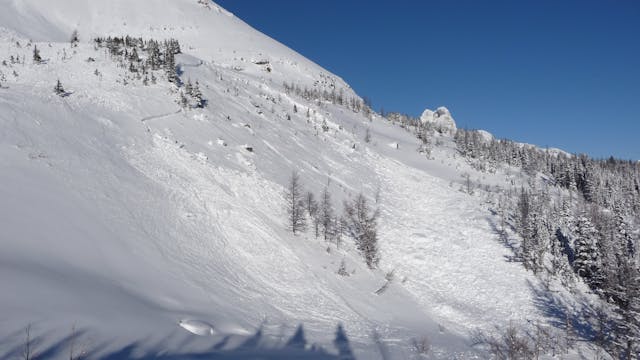
Large avalanches like this are definitely enough to bury you.
9. Very large avalanches in isolated areas
Very large avalanches are powerful enough to destroy a stand of mature trees or knock a train off the tracks. Under considerable danger, this type of catastrophic avalanche is considered likely in isolated areas. This is probably the most difficult concept to manage, as the location and time at which these deadly slides can be triggered will vary significantly across the landscape.
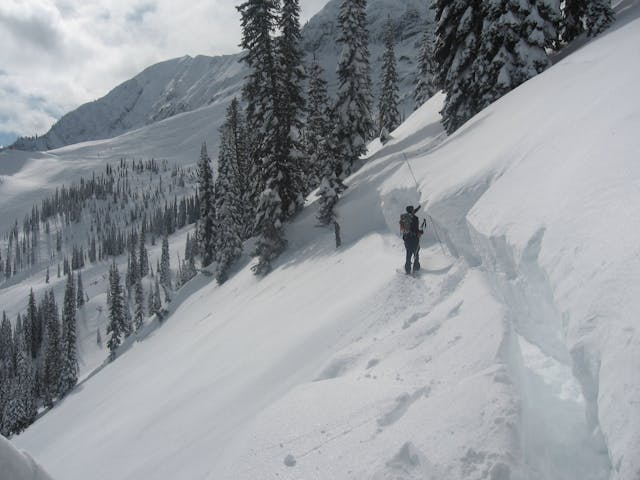
Very large avalanches can be triggered in isolated areas. Are you prepared to manage this hazard? Photo: Mark Bender.
10. Safe travel habits are critical
With all this mind, when the danger is considerable, safe travel habits are critical to managing your risk. Limit your group’s exposure to avalanche terrain, plan your escape routes before committing to a slope, and keep those lines of communication open. As always, treat the mountains with respect.
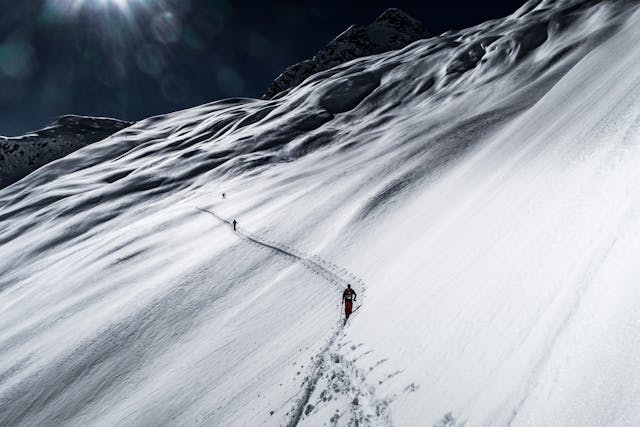
Travel in avalanche terrain when the danger is considerable requires safe travel habits to limit your group’s exposure to danger. Photo: Saul Greenberg